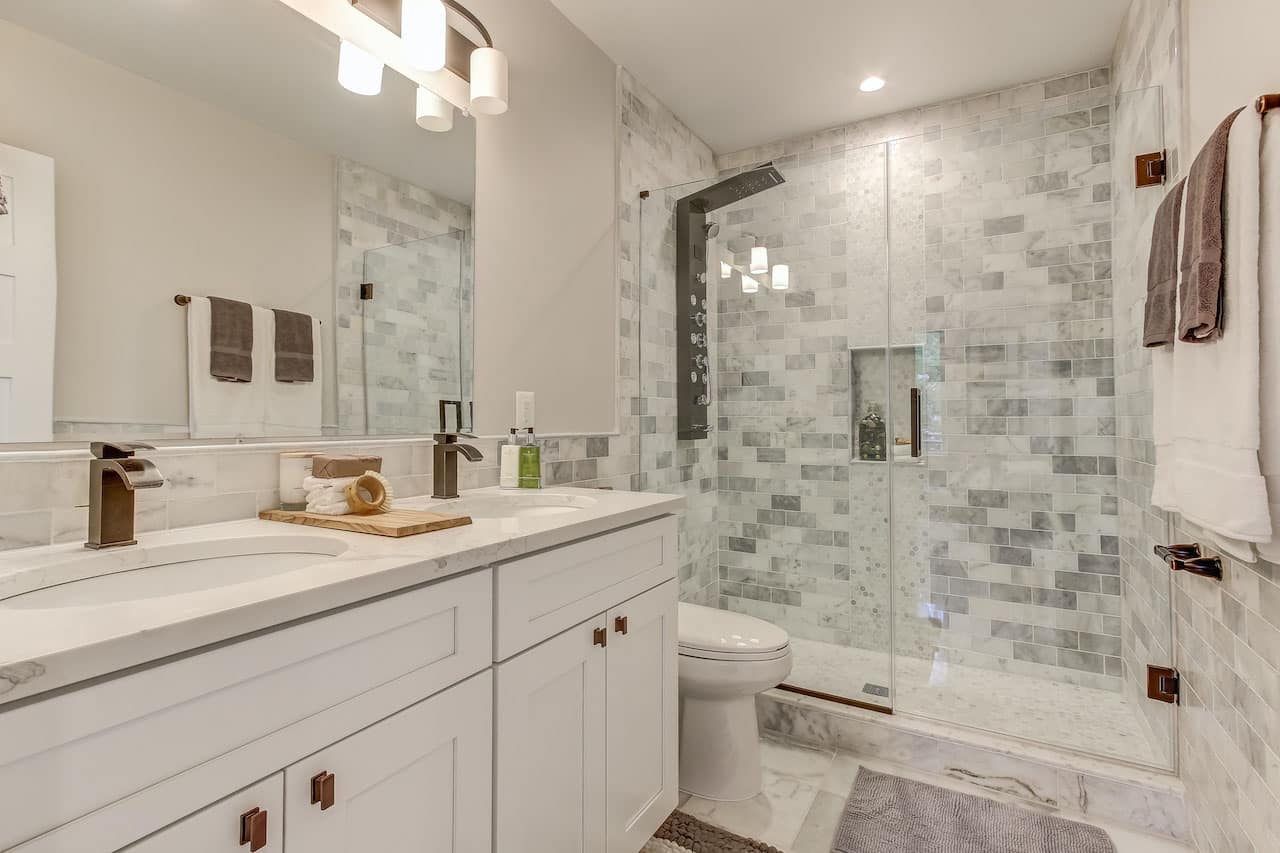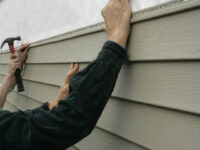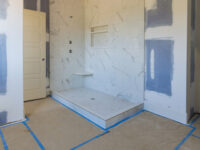The Fine Details of Bathroom Remodeling
Bathroom Remodeling Jacksonville FL is a great way to add value to your home. You can tackle many DIY projects to keep costs down, but a full renovation should be left to the professionals.
Structural changes like moving walls require a professional for code and safety reasons. Also, older homes often contain lead paint, which is dangerous to pregnant women and children.

While some design decisions in a bathroom remodel can be based solely on aesthetic preferences like paint color or wallpaper choices, others require careful consideration. One of those is lighting. You want a well-lit bathroom for both function and mood. Lighting can add warmth, and it also has the potential to make a room look bigger or smaller, depending on how it is used.
If you plan to install new light fixtures, they must be rated for wet locations. This is especially true of recessed lights over showers or bath areas, but even wall sconces can be wet-rated with the right bulbs.
Aside from a new light fixture, consider adding a pendant or chandelier to create a unique design feature in your bathroom. This type of lighting can be a great conversation piece and a focal point for your remodel.
It would help to have enough outlets in your bathroom to accommodate all your electrical appliances, from blow dryers and electric razors to hair straighteners and curling irons. If replacing the outlets, don’t just swap out the 15-amp receptacles for GFCIs; upgrade to 20-amp receptacles that handle the higher-wattage appliances.
If you add a vanity, install more storage, or change the bathroom layout, you will likely need to install new light fixtures as part of your remodel. It is always a good idea to hire a licensed professional to install any lighting or electrical work in your home, including a bathroom renovation. This will ensure that the work is done correctly and to code.
Whether a small shelf in the corner of a window or a new free-standing bathtub with storage space underneath, incorporating plenty of storage into your bathroom will improve its functionality and increase your home’s overall value. It’s a great way to make things like towels, toiletries, and cleaning supplies more accessible.
A remodel that involves changing the layout of a bathroom can be a bigger undertaking than a simple makeover or fixture replacement. This might include moving or removing fixtures like the tub/shower, toilet, or sink, which are often cumbersome and messy. Layout changes include relocating wiring, which is more complex and expensive than replacing a fixture.
Depending on the complexity of your project, it might take longer to complete than you originally anticipated. Considering this and planning can help you stay on budget and avoid costly delays. For example, it’s a good idea to clear and store personal items that can’t be moved from the bathroom before work begins. This will declutter the area around the room and protect those items from dust and damage.
Once the remodeling is done, it’s time to install the trim and finish touches. This is where the space comes together and feels like a brand-new bathroom. You can add window treatments, decorative storage containers, and pictures to your wall for a finished look that’s uniquely yours. Then, sit back and enjoy your newly renovated space.
A bathroom remodeling project is one of the most significant investments you can make in your home. Whether you plan to put your home on the market soon or want to enjoy it for years, making wise choices will add value and enhance functionality. But the nitty-gritty details, processes, options, and decisions can seem daunting. The first step is understanding the difference between a remodel and a renovation.
A basic remodeling may include painting and replacing cabinetry, but it does not involve gutting the room or changing its footprint. A complete gut or full replacement removes the tub/shower, toilet, vanity sink cabinet, flooring, and drywall — often requiring new electrical wiring. These projects are expensive, messy, and invasive. They also require permits and professional plumbing and electrical services.
Considering a major layout change, it’s important to consider Universal Design, which helps people of all ages and abilities live comfortably in their homes. It is a growing trend that includes features like grab bars and wider doorways for easier access, and it’s an important consideration when remodeling your bathroom.
Depending on the scope of your work, you may need to have the plumbing repaired. Chatting with a plumber or contractor about this at your design meetings is worthwhile. If you need a plan for your repiping, it could cost you more than it should.
Ventilation is another important aspect of a bathroom remodel. Many people rely on windows, but they can let in traffic pollution, pollen, and even rats. The best solution is to install a central ventilation system that vents directly outside the house rather than into an attic or crawl space. It can also help reduce mold and mildew.
Bathrooms take on a lot of abuse, particularly regarding water. They need to handle big temperature swings, humidity changes, and outright exposure to water. They must also be easy to clean and hold up to harsh chemicals. That’s why using materials suitable for a bathroom remodel is so important. It’s tempting to cut corners, but you’ll spend a lot more on replacement flooring in the long run if you choose a material that isn’t appropriate for bathrooms.
Several great bathroom flooring options include tile, vinyl, and waterproof wood. The tile is highly customizable and available in various price points, styles, and colors. You can wear a classic white marble look, bring the outdoors in with the oceanic blue tile, or create something unique.
Vinyl is another affordable option that’s easy to install yourself. It’s available in sheets or tiles and can be cut with a utility knife to fit awkward areas around the toilet. The newest luxury vinyl plank (LVP) has a rigid core engineered to withstand heavy foot traffic, scratches, and even water damage.
Wood floors are also popular, but you must stick with engineered wood rather than solid hardwood in the bathroom. Hardwood is unsuitable for moisture-prone areas because it can rot and mold. Engineered wood, on the other hand, has a plywood base that holds up well against moisture. It also looks authentically like wood and is available in various finishes, from gray weathered boards to rich dark oaks.
When the heavy lifting is done and your remodel is 95% complete, it’s easy to pat yourself on the back and say, “I’m finished now – this bathroom looks beautiful!” You must pay attention to the finishing touches to bring the space up to 100%. These things make a difference between a good and spectacular bathroom.
For example, adding a small piece of functional furniture—a side table or upholstered bench—brings comfort and functionality to the room. This is an especially important feature in bathrooms, which must handle big temperature changes, extreme humidity fluctuations, and a lot of water exposure.
Decorative accessories also add to the room’s personality. A framed artwork or a collection of pretty soap and lotion dispensers can add an elegant, refined touch to any bathroom. You can even add a splash of color using a decorative glass backsplash behind the sink or a framed piece of wall art in the shower area that blends vintage + modern.
One of the most important finishing touches you can make is incorporating Universal Design elements into your bathroom. This is an approach to designing that makes a space usable for people of all ages and abilities. You can’t predict the future, but you can make a space more usable as you age by incorporating simple features such as blocking the walls for potential support bars if and when the time comes to use them. By planning, you can ensure your bathroom will serve you and your family for years. The key is to plan carefully and always use quality materials in your project.






